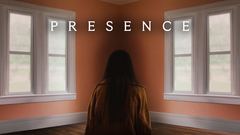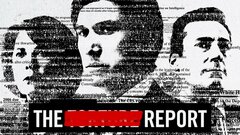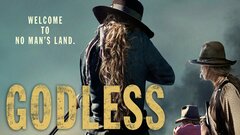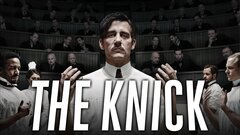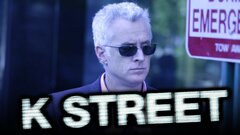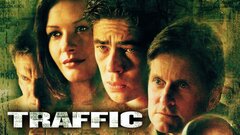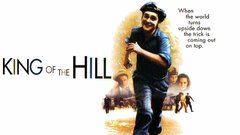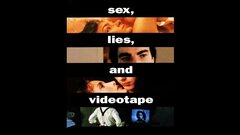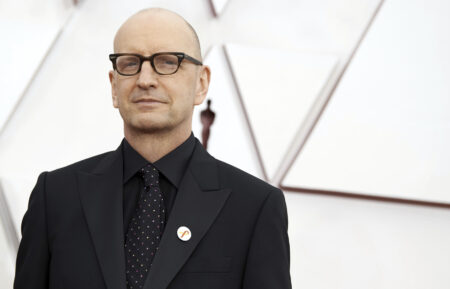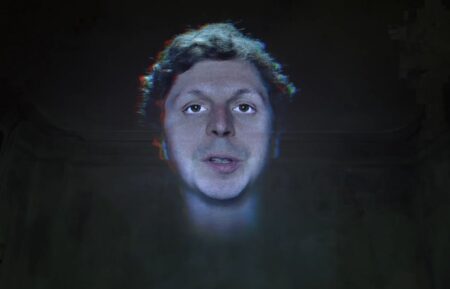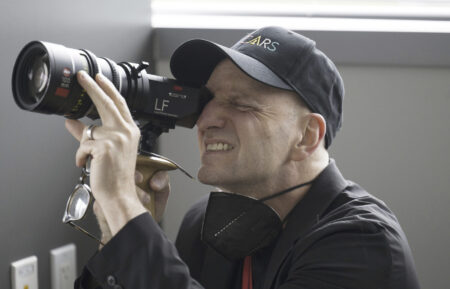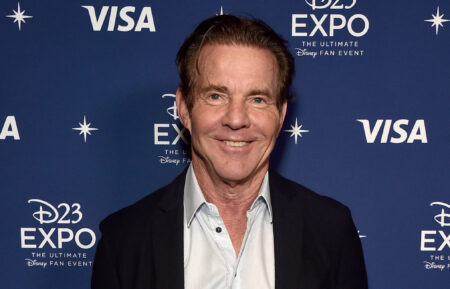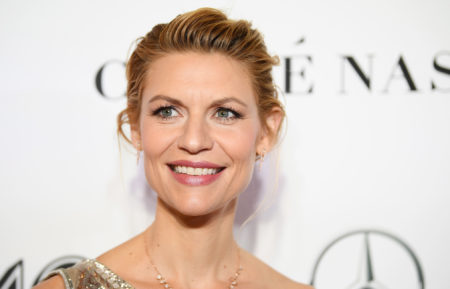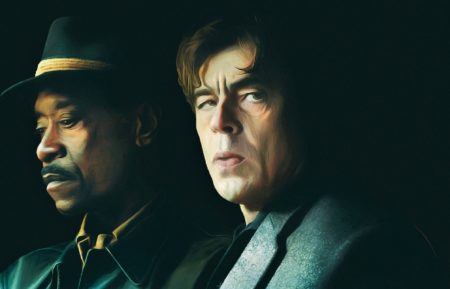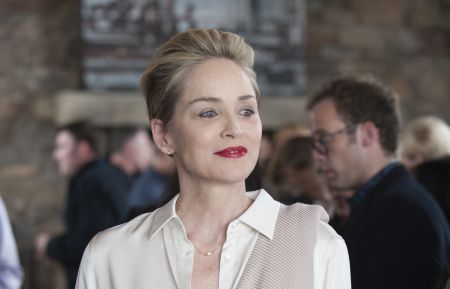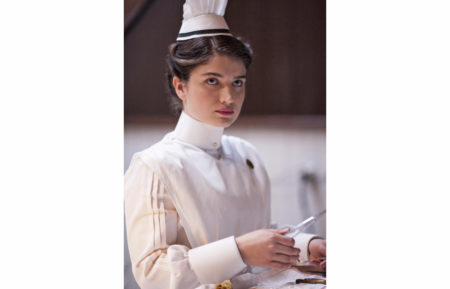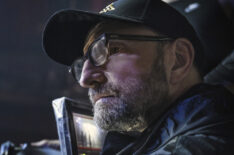Despite being anointed a wunderkind after winning the Palme d'Or at the Cannes Film Festival for his debut film, "Sex, Lies and Videotape" (1989), director Steven Soderbergh spent the better part of the ensuing decade struggling to find his creative and commercial footing. After following up his Cannes triumph with the baffling "Kafka" (1991), Soderbergh all but disappeared from Hollywood's radar, thanks to commercial failures like "King of the Hill" (1993) and "The Underneath" (1995).
He cleansed his palate with the truly bizarre "Schizopolis" (1997), which helped pave the way for a revitalized career with "Out of Sight" (1998), a stylish adaptation of Elmore Leonard's romantic crime thriller that finally put Soderbergh on the map. The director soon entered into a fertile period that saw him make creatively satisfying films that also made money; most notably "Erin Brockovich" (2000) and "Traffic" (2000), the latter of which earned him an Oscar for Best Director. After directing the highly-commercial "Ocean's Eleven" (2001), Soderbergh again felt the need to cleanse his soul with "Full Frontal" (2002) and "Solaris" (2002), both of which earned him considerable scorn.
Always willing to experiment, as he did with the low-budget "Bubble" (2006) and the sprawling four-hour epic "Che" (2008), Soderbergh was able to keep alive his independent spirit while his feet remained firmly planted in the commercial world, even at the risk of earning detractors and disappointing fans - the mark of a truly independent filmmaker.
Born on Jan. 14, 1963 in Atlanta, GA, Soderbergh moved around as a child and spent his formative years growing up in Baton Rouge, LA, where his father, Peter, served as Dean of the College of Education at Louisiana State University, and his mother, Mary, was a parapsychologist. As a teenager, he cut his teeth making Super-8 short films with equipment borrowed from LSU film students.
After graduating LSU Laboratory School, a K-12 directly connected to the university, Soderbergh picked up and moved to Los Angeles to try his hand in Hollywood - initially to frustrating results. To support himself, Soderbergh worked as an editor on "Games People Play" (NBC, 1980-81) and a scorekeeper on "Laff-a-Thon." Returning home after failing to make any headway, he continued honing his craft with several more Super-8 short films, including "Rapid Eye Movement," a manic chronicle of his time in Los Angeles, and "Winston," which focused on sexual deception - a recurrent theme later in his career.
Meanwhile, he began helming music videos for local Louisiana bands, which led to his first big break, directing the Grammy-nominated concert film, "9012Live" (1985), for the progressive rock band, Yes.
In 1987, Soderbergh decided to make a second run at feature directing so moved back to Los Angeles. On his way there, he began writing a script that was in part inspired by a recent confession to an ex-girlfriend about his infidelity. Upon his arrival, he joined forces with producer Nick Wechsler and spent the next six months looking for funds. With little more than $1 million in place, Soderbergh returned to Baton Rouge to shoot "sex, lies and videotape" (1989), a finely crafted morality play about sexual intrigue and mendacity, starring James Spader, who enjoys videotaping women talking about sex more than actually having it.
He takes particular interest in the icy wife (Andie MacDowell) of an old college friend (Peter Gallagher), who cheats with his spouse's own fiery sister (Laura San Giacomo). After making waves at the United States Film Festival - precursor of Sundance Film Festival - "sex, lies and videotape" took Cannes by storm, winning a Palme d'Or for Best Film.
Dubbed a wunderkind by critics, Soderbergh set the stage for directors like Quentin Tarantino, Robert Rodriguez and others to follow. The film was snatched up by rising powerhouse, Miramax Films, and proved to be a box office hit upon its later summer release. "Sex, lies and videotape" earned him an Oscar nomination for Best Original Screenplay, establishing Soderbergh as one of the most promising young filmmakers of his generation.
But that promise took nearly a decade to fulfill. Soderbergh's subsequent films throughout the next decade were an artistically mixed bag. Soderbergh followed up with the disappointing "Kafka" (1991), an interesting, though muddled existential thriller starring Jeremy Irons as a fictional version of the famed paranoid author.
Mostly shot in black-and-white and evocative of German Expressionism, "Kafka" was an utter failure both artistically and financially, leading some who had dubbed him the new prince of independent film to retract their words. Soderbergh rebounded from his sophomore slump with another study in emotional isolation, "King of the Hill" (1993), a sensitively wrought and underappreciated gem that followed a Depression-era boy (Jesse Bradford) coping with poverty and neglect.
The director developed another variation on the same theme with "The Underneath" (1995), a remake of Robert Siodmak's film noir classic "Criss Cross" (1949). The heavily stylized film, which featured a chromatic color scheme, told an intricate, fragmentary tale about a compulsive gambler (Gallagher) who reunites with his ex-wife (Alison Elliott), which leads to a plan to rob an armored car. Employing flashbacks, flash-forwards and endless plot twists, Soderbergh's film won some critical praise, but ultimately failed to generate an audience. His lack of enthusiasm for the project while shooting perhaps led to a cold and empty film.
Finding himself in a rut after "The Underneath" and feeling the need for a refresher in the joys of indie filmmaking, Soderbergh trekked home to Baton Rouge and shot "Schizopolis" (1997) for $250,000 with used equipment and a five-person crew. He also cast himself in a dual leading role, playing both Fletcher Munson, an office employee at a self-help company who comes into contact with Dr. Jeffrey Korchek, a doppelganger who happens to be having an affair with Munson's wife (Betsy Brantley). Adding an element of psychodrama, Soderbergh cast his ex-wife, Brantley, in scenes that wickedly parodied their disintegrated five-year marriage.
The result was an indescribable exercise in avant-garde filmmaking that veered wildly from bizarre to downright incomprehensible. While editing "Schizopolis" in Baton Rouge, he took 10 days to shoot "Gray's Anatomy" (1997), creating the most cinematic of the filmed Spalding Gray monologues. Batteries recharged, Soderbergh returned to mainstream movies, directing the adaptation of Elmore Leonard's novel "Out of Sight" (1998), starring George Clooney as a charming thief who falls for a U.S. Marshal (Jennifer Lopez) after taking her hostage during a prison break.
Stylish, soulful and boasting an intense onscreen chemistry between the two leads, "Out of Sight" was a critical darling - though not an enormous box office hit - and earned several major award nominations, including Academy Award nods for Best Editing and Best Adapted Screenplay. More importantly, the film increased the value of his stock and led to a fruitful period for the director that resulted in creatively satisfying movies that also earned at the box office.
Back on a successful creative track, Soderbergh tackled "The Limey" (1999), a revenge drama about a British ex-con (Terence Stamp) who travels to Los Angeles to avenge his daughter's death. Casting established stars like Stamp and Peter Fonda in leading roles, the director tapped into their iconic screen presences which lent an extra layer to the story, even using clips of Stamp in Ken Loach's "Poor Cow" (1967) as flashbacks.
Soderbergh's visual panache and strong handle on the material took what could have been a run-of-the-mill gangster story and elevated it to a work of art. His immediate follow-up, the highly commercial "Erin Brockovich" (2000), was on the surface an atypical project for the independent-minded director. Starring Julia Roberts as the titular character, the character drama focused on an unemployed single mother who bullies her way into the law offices of her accident attorney (Albert Finney) and convinces him to give her a job as consolation for losing her case.
After becoming his office clerk, Brockovich finds files on a PG&E case that rouses her suspicions, leading to an investigation that uncovers a systematic cover-up of industrial poisoning that caused an increased rate of cancer for one community. Both inspirational and entertaining, "Erin Brockovich" became Soderbergh's first major success, grossing over $125 million at the box office and earning several Academy Award nominations, including one for Best Picture and Best Actress.
Soderbergh would have had a banner year in 2000 with "Erin Brockovich" alone. But he also directed the multi-character "Traffic" (2000). Based on a 1989 British miniseries of the same name, "Traffic" was a cross between the director's commercial films and his experimental indie features that tackled the issue of the failed War on Drugs by focusing on the personal dramas of a broad spectrum of those involved.
Acting as his own director of photography, but taking credit as Peter Andrews, Soderbergh shot each of the film's three major storylines in a different color scheme - jaundiced yellow for a decaying Mexico, lush colors for affluent San Diego, and a cold bluish hue for isolated Washington, D.C. With 110 speaking roles, the sprawling film traced the war on drugs from all sides - from a newly appointed drug czar (Michael Douglas) and low pay-grade Mexican police officers (Benicio Del Toro and Jacob Vargas) to the affluent wife (Catherine Zeta-Jones) of a cocaine distributor and upper middle-class white users (Erika Christensen and Topher Grace).
A critical triumph, as well as a box-office success, "Traffic" was part of the one-two combination alongside "Erin Brockovich" that brought Soderbergh numerous end-of-the-year prizes on his way to becoming the first director since Michael Curtiz in 1939 (for 1938's "Angels with Dirty Faces" and "Four Daughters") to receive dual Academy Award nominations for Best Director. He eventually took home the Oscar for his work on "Traffic," capping a year where he finally achieved mainstream success.
Adding to his commercial resume, Soderbergh directed the all-star remake of "Ocean's Eleven" (2001), featuring a new so-called Rat Pack that included George Clooney, Julia Roberts, Brad Pitt and Matt Damon. A fun, stylish romp, the new "Ocean's" focused on a newly paroled thief (Clooney) who handpicks an 11-man team to rip-off over $150 million from three Las Vegas casinos owned by a classy, but ruthless entrepreneur (Andy Garcia).
"Ocean's Eleven" was another bona fide hit for Soderbergh, cementing the director's credentials as a highly viable and successful commercial filmmaker. But in 2002, Soderbergh took a different approach to his craft and directed the non-narrative "Full Frontal," starring Julia Roberts, David Duchovny and Catherine Keener. Shot in 18 days, the film featured guerilla-style camera work and improvisation from the actors.
Despite the all-star pedigree, the no-budget project failed to congeal creatively and earned the director some well-deserved criticism. The critical drubbing continued when he attempted to remake the sci-fi cult classic, "Solaris" (2003), a slow-moving and ultimately dull sci-fi thriller starring Clooney as a psychologist who travels to a faraway space station to investigate the strange behavior of a small group of scientists on a mysterious planet.
Going back to the well, Soderbergh reunited the original cast and once again breathed vibrancy into "Ocean's Twelve" (2004), an upbeat and visually interesting sequel that ultimately suffered from a pointless plot that needed 10 minutes of exposition at the end to explain.
Despite the obvious fun being had by Clooney, Roberts, Pitt both during filming and onscreen, viewers were not amused. The lackluster exercise failed to win many admirers who were tiring of the endless practical jokes, boating parties on Lake Cuomo and insular brotherhood that preceded the filming of each project and continued throughout its promotions - like the impossibly gorgeous actors were in on a joke only they understood, leaving the public out.
Despite the lackluster response to the second "Ocean's" film, Soderbergh formed the production company Section Eight with Clooney and entered the television world with the Washington insider drama, "K Street" (HBO, 2003). The series starred real-life political gurus and spouses James Carville and Mary Matalin, who appeared as themselves but were surrounded by fictional characters as they embarked on running their own fictional consulting firm.
Interspersing real politicians in documentary-style, the interesting experiment ultimately failed to attract much attention outsight the Beltway, thanks in large part because of its shaky narrative style - part scripted entertainment; part improvisation with real-life Washington politicos - that lead to awkward moments onscreen. There was genuine comedy and pathos at the heart of Soderbergh's follow-up, the improvised "Unscripted" (HBO, 2004-05), which followed the ups and downs of a trio of struggling actors working their way through Hollywood with the tough-love guidance of their acting coach.
Always game for a good filmmaking experiment - if only to cleanse commercialization from his pores - Soderbergh made his next film, "Bubble" (2006), an unlikely love triangle between three factory workers that eventually leads to murder. Starring a series of non-actors from the small Ohio town of Belpre where the film was shot, the experiment was made on a small, six-figure budget and a crew of less than ten.
"Bubble" was also unusual for its theatrical release, which was followed the next day by a cable broadcast and DVD release two subsequent days later. With "The Good German" (2006), Soderbergh summoned the film noir style from Hollywood days of yore, collaborating once again with Clooney, who starred as a U.S. war correspondent covering the Potsdam Peace Conference in Berlin following the defeat of Hitler's Third Reich. After witnessing the murder of an American G.I. on the Russian side of the city, the reporter suddenly finds himself alone in finding the truth while confronting his pre-Berlin past in the form of his old lover (Cate Blachett), who has been irrevocably damaged by the war.
"The Good German" demonstrated Soderbergh's love of American noir and the German expressionism from which it was inspired. But his zealous attention to style and period detail sapped creative energy from elements where it was needed most - mainly story and character development - leading to poor reviews and practically zero audience interest.
Soderbergh decided to go back to the commercial well once again, directing the third and possibly last installment, "Ocean's 13" (2007), a much more intriguing and well-received addition to the series than its immediate predecessor. Again starring Clooney, Pitt, Don Cheadle, and the other neo-Rat Packers, the spunky thriller was elevated by the addition of Al Pacino, who played a ruthless casino owner who becomes the target of Danny Ocean's crew after betraying beloved member, Reuben Tishkoff (Elliott Gould).
The return to the fun-loving, intricately-plotted roots of the first film was welcomed by both critics and audiences alike. Keeping his fans and critics off balance once again, Soderbergh directed "Che" (2008), an almost five-hour long biography about the life and times of Cuban revolutionary Che Guevara (Benicio del Toro). Long, sprawling and complicated, "Che" was broken up into two parts, while earning mixed reviews after its debut at the 2008 Cannes Film Festival.
The film also earned its share of criticism, particularly after a screening in Miami, for being too favorable in its depiction of the revolutionary. Turning heads once again, Soderbergh cast real-life porn star Sasha Grey for his next film, "The Girlfriend Experience" (2009), another low-budget, improvisatory exercise in independent filmmaking. Back to commercial directing once again, he helmed "The Informant!" (2009), a darkly comic thriller based on a true story about a corporate whistleblower (Matt Damon) who helps the FBI uncover a price-fixing scheme at Archer Daniels Midland, only to get caught defrauding the very company he was informing on while also displaying bizarre behavior brought on by his bipolar disorder.
Following some low-key productions, notably the Spalding Gray documentary "And Everything Is Going Fine" (2010), Soderbergh returned to a flurry of productivity, offering up the unsettling 2011 ensemble thriller "Contagion," featuring Damon, Kate Winlset, Jude Law and many other notable actors. The hard-hitting action film "Haywire" followed in early 2012, with real-life MMA star Gina Carano convincingly playing a tough secret agent who clashes with her former associates, portrayed by Channing Tatum, Michael Fassbender and Ewan McGregor, among others. Soderbergh worked with Tatum again in his next two films, the well-received male-stripper drama "Magic Mike" (2012) and the Hitchcockian thriller "Side Effects," co-starring Law and Rooney Mara.
Threatening to retire from cinema after his long-in-the-works Liberace biopic "Behind the Candelabra" (2013), Soderbergh finally brought the project to the small screen on HBO, with Michael Douglas playing the garish and talented showman and Damon portraying his lover. In the fall of 2013, Soderbergh won his first Emmy for directing the production, with Douglas also nabbing an award for his impressive lead performance.




